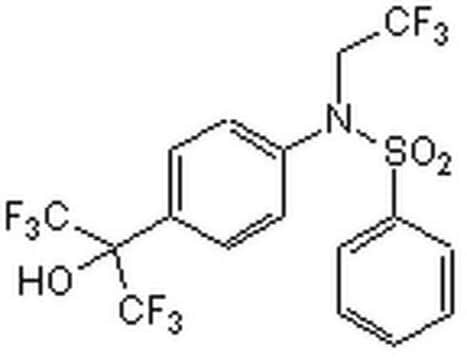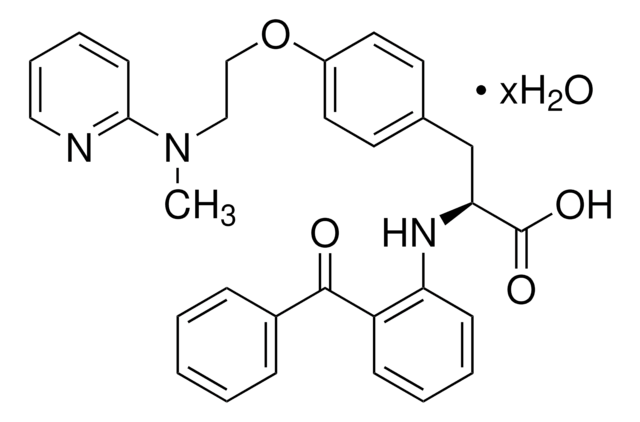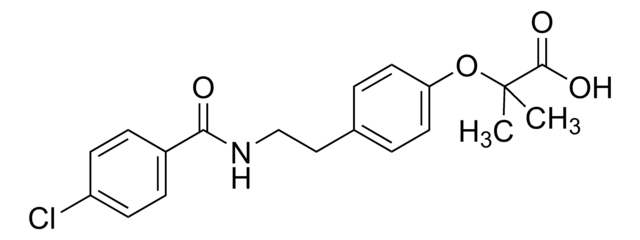G6793
GW7647
≥98% (HPLC)
Synonym(e):
2-(4-(2-(1-Cyclohexanebutyl)-3-cyclohexylureido)ethyl)phenylthio)-2-methylpropionic acid
About This Item
Empfohlene Produkte
Assay
≥98% (HPLC)
Farbe
white
Löslichkeit
DMSO: soluble 16 mg/mL
H2O: insoluble
SMILES String
CC(C)(Sc1ccc(CCN(CCCCC2CCCCC2)C(=O)NC3CCCCC3)cc1)C(O)=O
InChI
1S/C29H46N2O3S/c1-29(2,27(32)33)35-26-18-16-24(17-19-26)20-22-31(28(34)30-25-14-7-4-8-15-25)21-10-9-13-23-11-5-3-6-12-23/h16-19,23,25H,3-15,20-22H2,1-2H3,(H,30,34)(H,32,33)
InChIKey
PKNYXWMTHFMHKD-UHFFFAOYSA-N
Angaben zum Gen
human ... PPARA(5465)
Anwendung
- in defatting medium to treat primary human hepatocytes
- to test its effect on the glycolytic function in cardiomyocytes
- to test its effect on infant mouse heart
- in breast cancer MDA-MB-231 cells to activate PPARs
Biochem./physiol. Wirkung
Leistungsmerkmale und Vorteile
Rechtliche Hinweise
Lagerklassenschlüssel
11 - Combustible Solids
WGK
WGK 3
Flammpunkt (°F)
Not applicable
Flammpunkt (°C)
Not applicable
Persönliche Schutzausrüstung
Eyeshields, Gloves, type N95 (US)
Analysenzertifikate (COA)
Suchen Sie nach Analysenzertifikate (COA), indem Sie die Lot-/Chargennummer des Produkts eingeben. Lot- und Chargennummern sind auf dem Produktetikett hinter den Wörtern ‘Lot’ oder ‘Batch’ (Lot oder Charge) zu finden.
Besitzen Sie dieses Produkt bereits?
In der Dokumentenbibliothek finden Sie die Dokumentation zu den Produkten, die Sie kürzlich erworben haben.
Kunden haben sich ebenfalls angesehen
Unser Team von Wissenschaftlern verfügt über Erfahrung in allen Forschungsbereichen einschließlich Life Science, Materialwissenschaften, chemischer Synthese, Chromatographie, Analytik und vielen mehr..
Setzen Sie sich mit dem technischen Dienst in Verbindung.














